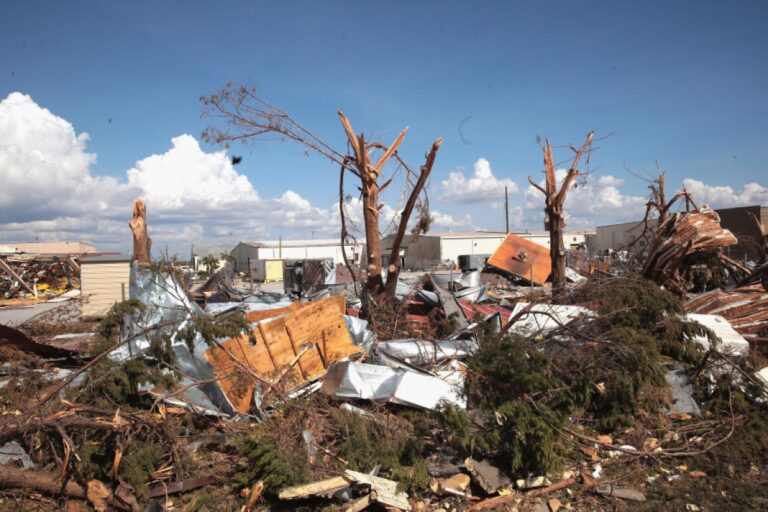A recent government report has raised serious concerns about the readiness of military bases in San Diego to face the escalating threats posed by climate change. According to the findings highlighted by NBC 7 San Diego, key installations lack adequate infrastructure and contingency plans to address the increasing risks of extreme weather events, rising sea levels, and other environmental hazards. This alarming assessment underscores the urgent need for enhanced preparedness measures to safeguard national security and the well-being of service members stationed in the region.
San Diego Military Bases Face Rising Climate Risks and Unpreparedness
Recent findings reveal that key military installations throughout San Diego are increasingly vulnerable to the escalating impacts of climate change, including rising sea levels, intensified wildfires, and extreme weather events. Despite these growing threats, preparedness measures remain critically inadequate, posing significant risks not only to the operational capability of these bases but also to national security. The report underscores a glaring gap between the scale of climate hazards and the current defensive infrastructure, highlighting an urgent need for strategic investment and comprehensive resilience planning.
Key challenges identified across the evaluated bases include:
- Insufficient flood defenses in coastal areas prone to storm surges and tidal flooding;
- Lack of integrated wildfire mitigation systems to protect vast, fire-prone training grounds;
- Outdated infrastructure unable to withstand extreme heat and precipitation fluctuations;
- Limited coordination between military operations and local climate adaptation initiatives.
| Military Base | Primary Climate Risk | Preparedness Level |
|---|---|---|
| Naval Base San Diego | Coastal flooding and erosion | Low |
| Marine Corps Air Station Miramar | Wildfires | Moderate |
| Naval Base Coronado | Storm surge and extreme rainfall | Low |
Critical Infrastructure Vulnerabilities Exposed in Government Assessment
The recent government assessment has revealed alarming deficiencies in the resilience of San Diego’s military installations against escalating climate change impacts. Key vulnerabilities were identified across power supply systems, flood defenses, and emergency response frameworks. Experts warn that rising sea levels and increased frequency of wildfires could severely disrupt operations, posing a significant risk to national security and local communities.
Among the findings, several infrastructure elements were highlighted for urgent upgrades to withstand extreme weather events. Critical points include:
- Outdated electrical grids prone to failures during heatwaves
- Insufficient drainage and levee systems vulnerable to storm surges
- Lack of comprehensive climate risk management plans across all base command units
| Vulnerability | Impact | Urgency Level |
|---|---|---|
| Power Infrastructure | Operational Disruption | High |
| Flood Protection | Facility Damage | Critical |
| Emergency Systems | Response Delays | Moderate |
Urgent Calls for Enhanced Adaptation Strategies and Resource Allocation
The recent government report highlights a critical gap in the readiness of San Diego’s military installations to withstand the escalating impacts of climate change. Experts stress that without immediate and substantial investments in infrastructure resilience, these bases could face severe operational disruptions. This raises alarms for national security, given the vital role these bases play in defense readiness and regional stability. Prioritized actions include:
- Upgrading flood defenses and stormwater management systems
- Implementing comprehensive heat mitigation and energy resilience plans
- Enhancing emergency response protocols tailored to climate-induced events
The allocation of resources remains a contentious issue, with calls for a dedicated budget that aligns with the scale of the climate threat. Officials advocate for transparent monitoring mechanisms to ensure funds are effectively deployed. The table below outlines proposed funding priorities versus projected climate vulnerabilities at key bases:
| Military Base | Projected Climate Risk | Funding Priority |
|---|---|---|
| Naval Base San Diego | Coastal flooding, sea level rise | High |
| Marine Corps Air Station Miramar | Wildfires, heatwaves | Medium |
| Naval Base Coronado | Storm surge, erosion | High |
Recommendations Focus on Strengthening Resilience and Emergency Response Systems
To address the glaring vulnerabilities identified in San Diego’s military installations, experts urge immediate enhancements to resilience strategies and emergency response frameworks. Central to these recommendations is the implementation of robust infrastructure upgrades designed to withstand increasingly severe climate events such as flooding, wildfires, and heatwaves. Additionally, the report highlights the necessity for comprehensive training programs to prepare personnel for rapid mobilization during emergencies, ensuring coordination between military and civilian agencies remains seamless and effective.
The report also emphasizes developing advanced early warning systems and real-time monitoring tools to predict climate-related threats with greater accuracy. Key recommended actions include:
- Upgrading base defenses to protect critical assets from storm surges and rising sea levels.
- Establishing resilient communication networks that function during disaster scenarios.
- Integrating climate risk assessments into routine operational planning and security protocols.
| Recommendation | Priority Level | Expected Impact |
|---|---|---|
| Infrastructure Reinforcement | High | Reduce damage from storms |
| Emergency Drills Enhancement | Medium | Boost readiness and response |
| Advanced Monitoring Systems | High | Improve threat prediction |
Concluding Remarks
As the findings of the government report make clear, the current state of readiness among San Diego’s military installations falls short in addressing the escalating dangers posed by climate change. With rising sea levels, extreme weather events, and other environmental threats looming, the urgency for enhanced resilience and proactive measures has never been greater. Ensuring the security and operational effectiveness of these strategic bases will require coordinated efforts between defense agencies, local authorities, and policymakers. As climate challenges continue to evolve, the spotlight remains firmly on San Diego’s military community to adapt swiftly and safeguard national defense assets against the consequences of a warming planet.







